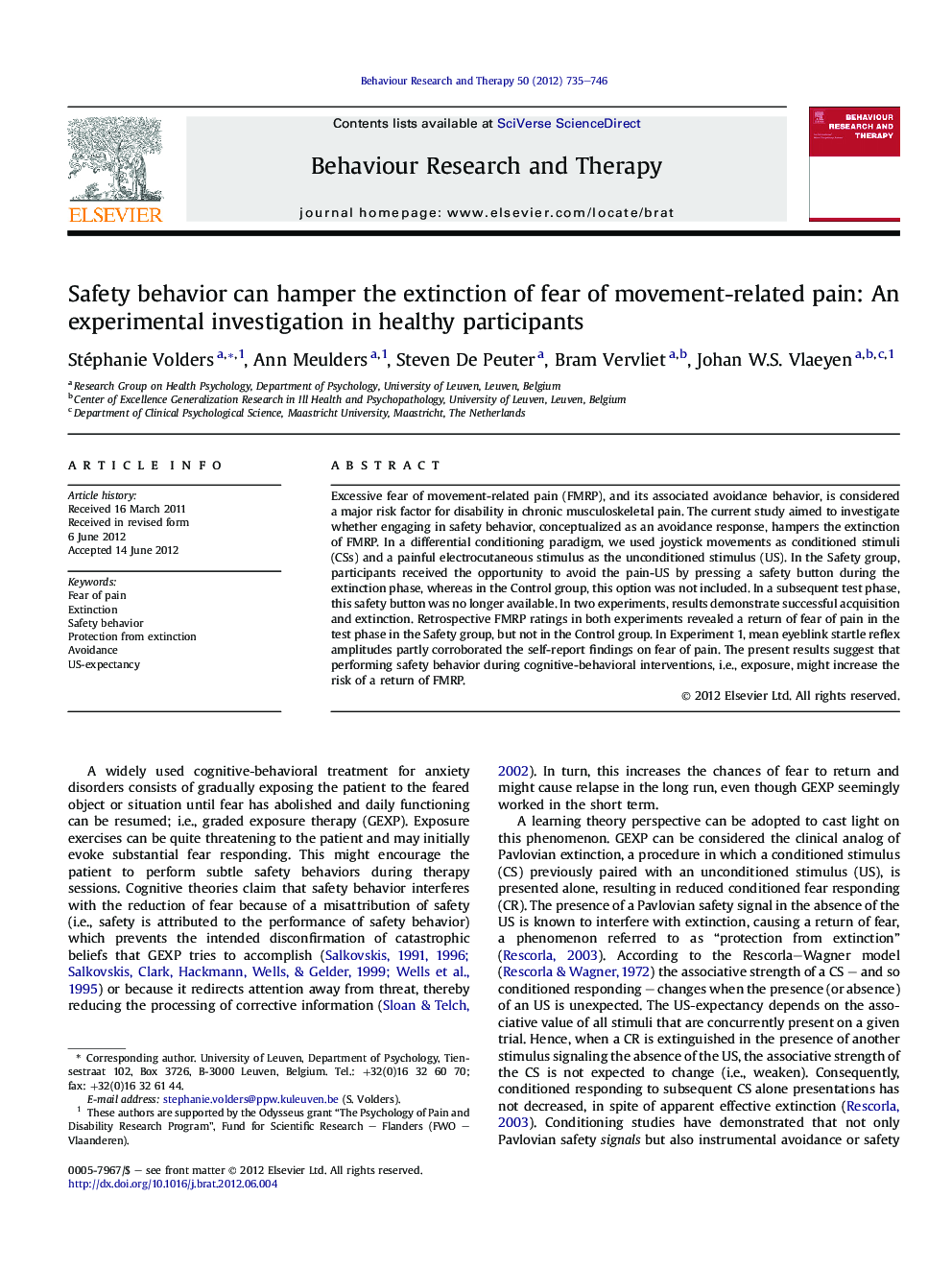| Article ID | Journal | Published Year | Pages | File Type |
|---|---|---|---|---|
| 901970 | Behaviour Research and Therapy | 2012 | 12 Pages |
Excessive fear of movement-related pain (FMRP), and its associated avoidance behavior, is considered a major risk factor for disability in chronic musculoskeletal pain. The current study aimed to investigate whether engaging in safety behavior, conceptualized as an avoidance response, hampers the extinction of FMRP. In a differential conditioning paradigm, we used joystick movements as conditioned stimuli (CSs) and a painful electrocutaneous stimulus as the unconditioned stimulus (US). In the Safety group, participants received the opportunity to avoid the pain-US by pressing a safety button during the extinction phase, whereas in the Control group, this option was not included. In a subsequent test phase, this safety button was no longer available. In two experiments, results demonstrate successful acquisition and extinction. Retrospective FMRP ratings in both experiments revealed a return of fear of pain in the test phase in the Safety group, but not in the Control group. In Experiment 1, mean eyeblink startle reflex amplitudes partly corroborated the self-report findings on fear of pain. The present results suggest that performing safety behavior during cognitive-behavioral interventions, i.e., exposure, might increase the risk of a return of FMRP.
► We examined the effect of safety behavior on the extinction of fear of pain. ► We performed two differential conditioning experiments with proprioceptive stimuli. ► Safety behavior can interfere with extinction and promote a return of fear. ► The effects of safety behavior during and after extinction are different.
